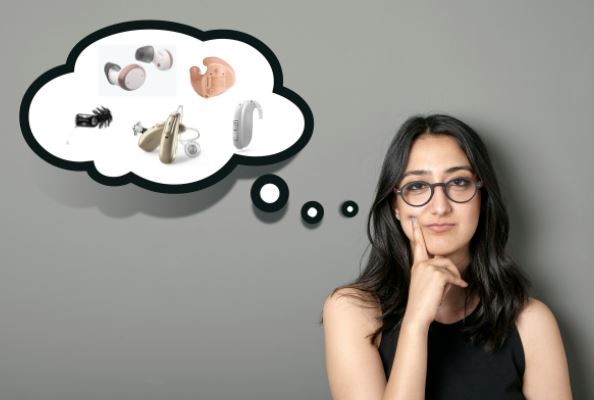Dear Readers:
During this holiday season, the editors at Hearing Health & Technology Matters (HHTM) are taking some time off. However, we are not leaving you without anything to read on our blog this week. Instead, we are publishing a special holiday edition filled with what we call our Readers’ Choice.
Our Readers’ Choices featured this week are the posts published on each of our individual blogs that drew the largest number of viewers during the year. Whether or not you have read these Readers’ Choice posts before, we think you will enjoy them.
Best wishes for a Happy & Healthy New Year!
by Shari Eberts
“Wow, your new hearing aids look really sexy,” said no one ever. While our hearing aids can help us feel sexier — because we can communicate better — the beige-colored arcs behind or in our ears don’t often look the part.
But maybe that is changing.
Large hearing aid manufacturer Sonova recently purchased the consumer electronics division of Sennheiser, adding headphones and wireless earbuds to its offerings. Could this be a move into personal audio equipment or perhaps an exploration of new form factors for its existing hearing aid technologies? Or hopefully both, giving hearing aid users a wider variety of offerings from which to choose.
But change never happens in a straight line.
Around the same time, Bose unveiled its latest hearables entrant — a self-fitting hearing aid — the first approved by the FDA. Industry watchers waited with anticipation to see what a hearing aid developed by one of the world’s leading consumer electronics products companies might look like. The answer disappointed many.
Bose’s SoundControl hearing aids look like a traditional hearing aid — neutral in color and conventionally shaped with a standard behind-the-ear form factor. And they act like one too — albeit a very “old style” hearing aid. Bose’s devices do not allow users to stream phone calls or media, while many of today’s most popular hearing aid styles do. This may not only be a miss of form for Bose’s devices, but also a miss of function.
Social media was ablaze: How will this typical looking device bring down stigma? How will its lack of functionality increase uptake of hearing devices? The answer may lie in its price, which at $849 for a pair is much less than the $5000 or more many of us pay for our hearing devices.
How should hearing aids look?
The debate around these two announcements got me wondering: How should hearing aids look? There is no one answer that fits everyone.
Some of us want our devices to be boldly shaped, brightly colored and noticeable. We decorate them and wear them with pride. If people can see our devices, we hope, it might make it easier to get the communication assistance we require.
Others prefer our hearing devices to slide into the background — hiding deep in our ears or blending into our hair or skin. We may be battling stigma or other self-imposed negative attitudes about hearing loss that inspire us to hide our devices from view and the inevitable questions they might raise about our ability to communicate well.
The degree and type of hearing loss may also factor into our choices. While people with mild or moderate hearing loss may do well with small devices, people with more severe losses may need the power that only larger aids can provide.
But form isn’t everything. Experienced hearing aid wearers increasingly want the functionality of a consumer device, allowing them to stream phone calls and media directly into the ears.
Those newer to hearing loss may prefer using a consumer device that, by the way, also helps them hear better. The two options provide similar services, but the emphasis is different, and perhaps the feeling one gets when using them varies too.
People with hearing loss benefit when there is choice.
The real answer is that there is no one right answer for everyone. And with so many new entrants coming into the hearables market — there doesn’t need to be. People with hearing loss benefit most when there are a variety of choices available — options for both the look and the function of our devices. As well as the price point.
I am excited to watch as the industry continues to evolve. The real winners this time around may actually be the consumer.

Shari Eberts is a passionate hearing health advocate and internationally recognized author and speaker on hearing loss issues. She is the founder of Living with Hearing Loss, a popular blog and online community for people with hearing loss, and an executive producer of We Hear You, an award-winning documentary about the hearing loss experience. Her book, Hear & Beyond: Live Skillfully with Hearing Loss, (co-authored with Gael Hannan) is the ultimate survival guide to living well with hearing loss. Shari has an adult-onset genetic hearing loss and hopes that by sharing her story, she will help others to live more peacefully with their own hearing issues. Connect with Shari: Blog, Facebook, LinkedIn, Twitter.






